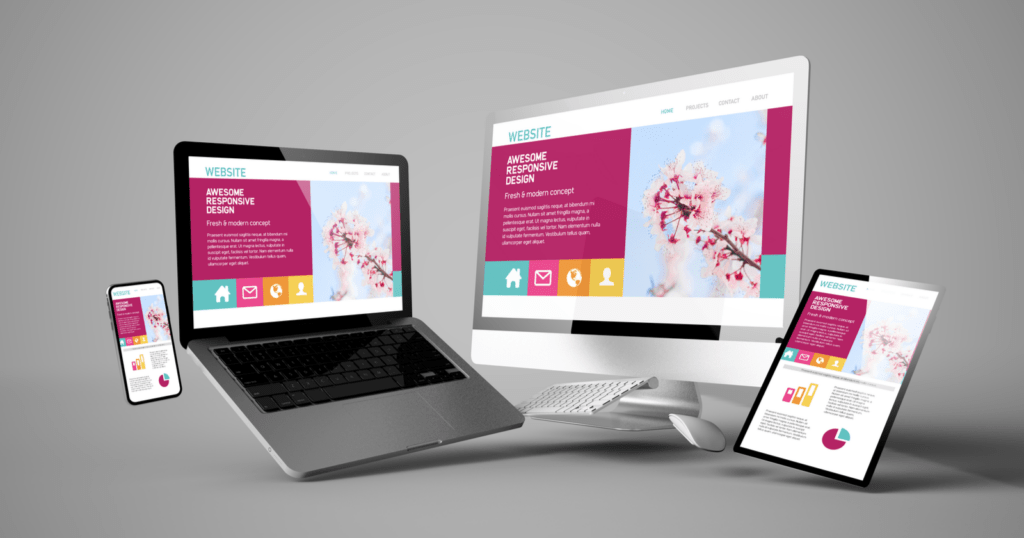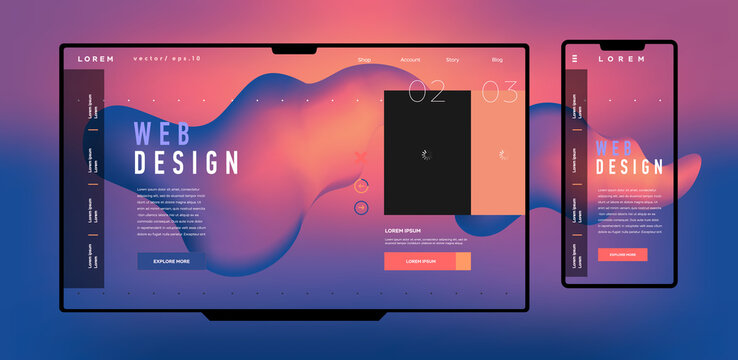Custom Website Design Solutions for Retail Websites
Wiki Article
Leading Tips for Producing an Impactful Web Site Design That Transforms
In today's digital landscape, the value of an impactful web site design can not be overemphasized, especially when it concerns transforming site visitors into consumers. To accomplish this, one need to take into consideration a selection of factors, consisting of understanding the target market, prioritizing user experience, and enhancing for mobile platforms. The calculated use of compelling call-to-actions and a well-defined aesthetic pecking order plays an essential function in leading individuals with their trip. As we explore these crucial aspects, it becomes noticeable that the success of your web site depends upon more than just appearance; it needs a thoughtful approach to layout and functionality.
Understand Your Target Audience
Recognizing your target audience is basic to efficient internet site layout, as it prepares for producing an interesting customer experience. Recognizing who your users are, including their demographics, choices, and habits, makes it possible for designers to customize the website's web content, format, and performance to satisfy particular requirements.Carrying out detailed market research study is essential in this process. Studies, interviews, and analytics can supply useful insights into user expectations and pain points. By assembling this data, designers can develop individual characters that represent various sections of the target market, making sure that layout choices are notified and pertinent.
In addition, recognizing the target audience helps in selecting suitable layout elements such as color pattern, typography, and images that resonate with users. A website that talks straight to its target market promotes a feeling of link and depend on, motivating longer gos to and higher conversion rates.
Eventually, a user-centered approach to internet site layout not only boosts customer fulfillment however likewise supports company goals by driving involvement and commitment. By focusing on the demands and choices of the target market, a web site can successfully offer its function and achieve wanted end results.
Prioritize Individual Experience
To improve the overall performance of a website, prioritizing individual experience (UX) is essential (Website Design). A well-designed UX makes sure that visitors can navigate the website easily, find details quickly, and involve with material meaningfully. This results in enhanced customer contentment and higher conversion pricesBegin by executing intuitive navigating. Menus must be practically structured, allowing users to situate key areas of the site with minimal effort. Uniformity in style elements, such as color pattern and fonts, cultivates knowledge, which is crucial for keeping user interaction.
Furthermore, take into consideration the packing speed of your website. A delay of simply a few seconds can result in significant drop-offs, as individuals are less likely to await a slow-loading page. Enhancing images and enhancing code can improve efficiency and preserve visitors.
By prioritizing individual experience, you not only develop an extra enjoyable environment for visitors but likewise enhance your brand name's reliability. Eventually, an emphasis on UX is a financial investment in the long-lasting success of your site.
Optimize for Mobile Gadgets
Optimizing for mobile phones is essential in today's digital landscape, where a boosting number of users access websites via mobile phones and tablets. A mobile-friendly style not just boosts user experience yet also plays a considerable duty in enhancing online search engine rankings. To attain this, it is vital to embrace a responsive style that automatically gets used to numerous display sizes and about his positionings.
Filling rate is an additional crucial variable; mobile individuals are usually less client and anticipate quick access to info. Maximize photos and utilize internet browser caching to enhance efficiency. Finally, examination your site on several devices and screen resolutions to recognize and correct any kind of prospective use issues. By prioritizing mobile optimization, you make sure that your internet site stays competitive and effectively involves a broader audience.
Usage Engaging Call-to-Actions
A site's performance commonly pivots on its capability to assist site visitors toward wanted activities, making engaging call-to-actions (CTAs) essential parts of design. CTAs work as the critical points that guide individuals to engage with the site, whether that means making a purchase, registering for an e-newsletter, or downloading and install a source.To develop efficient CTAs, clearness is paramount. Usage succinct language that plainly interacts the action you want the individual to take. Phrases such as "Start," "Sign Up Free," or "Store Now" not just share necessity yet also get rid of uncertainty. The positioning of CTAs is similarly crucial; they ought to be strategically positioned throughout the website to ensure they are quickly noticeable, especially in high-traffic areas.
Moreover, the layout of CTAs must stick out without being noticeable. Use contrasting colors and clear font styles to guarantee they capture interest. In addition, take into consideration making use of directional hints, such as arrows or photos, to assist individuals toward these switches. By concentrating on these components, services can substantially boost user interaction, driving conversions and inevitably accomplishing their web site's goals.
Focus on Visual Pecking Order
Reliable internet site design depends greatly on a well-structured aesthetic hierarchy that guides users through content flawlessly. By organizing aspects in a manner that prioritizes details, developers can improve individual experience and assist in decision-making. This entails using dimension, shade, contrast, and spacing tactically to attract interest to the most vital components of a website.Making use of bigger fonts for headings and subheadings develops a clear distinction between various sections, click here for more permitting customers to check material easily. Additionally, using different colors for switches and calls-to-action can capture individual focus and urge interaction. Whitespace is another necessary part; it prevents clutter and allows individuals to concentrate on vital messages without distractions.
Images and graphics ought to match the text while likewise sticking to the well established power structure, reinforcing the overall message (Website Design). Consistency in design elements, such as color design and typography, further strengthens the visual hierarchy, making navigating intuitive

Verdict
In conclusion, reliable site design requires a comprehensive understanding of the target audience, prioritization of customer experience, and mobile optimization. Eventually, a well-executed internet site style offers as an important element in driving user actions and achieving service objectives.Report this wiki page